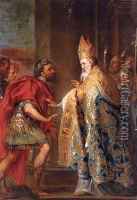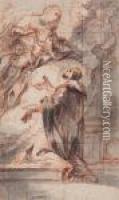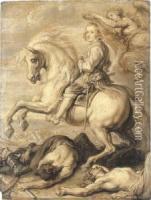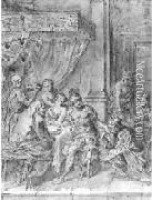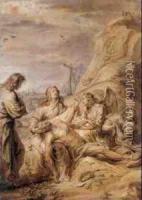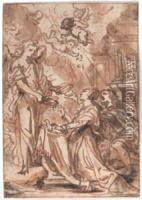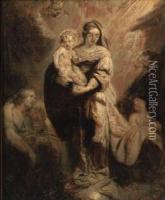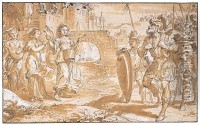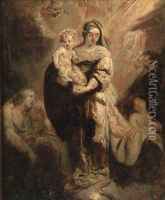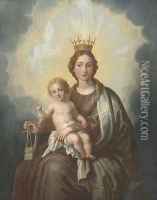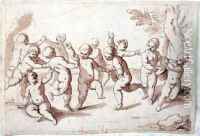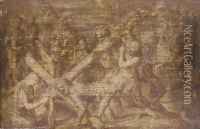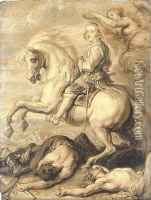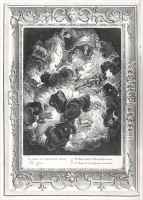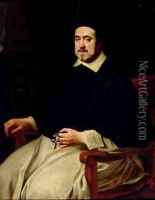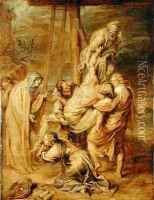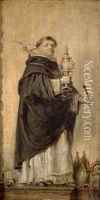Abraham Jansz. van Diepenbeeck Paintings
Abraham Jansz. van Diepenbeeck was a distinguished Dutch painter of the Baroque period. Born in 's-Hertogenbosch, Netherlands, in 1596, he was the son of a glass painter. He initially trained with his father, which led to an early career in designing stained glass windows, but his talents eventually drew him to Antwerp, a major center for art in the 17th century. Here, he became a master in the Guild of St. Luke by 1632 and began to flourish as a painter, draftsman, and engraver.
Van Diepenbeeck was influenced by Peter Paul Rubens, and his works often reflected Rubens' dynamic style, although he developed his own distinctive approach to composition and subject matter. He was adept in various genres, including history painting, portraiture, and the decoration of manuscripts. His religious and mythological scenes were particularly noted for their vivid detail and dramatic effect.
Throughout his career, Van Diepenbeeck received commissions from both religious institutions and the nobility. He also worked on designs for tapestries and book illustrations, showcasing his versatility as an artist. His work was not only appreciated in the Low Countries, but also gained recognition abroad, influencing the artistic scenes in both England and France.
Despite his success, there is a relative scarcity of biographical details about Van Diepenbeeck's personal life. What is known is that his contributions to the art world during the Baroque period were significant, and his works are still studied and admired today for their beauty and technical skill. Abraham Jansz. van Diepenbeeck passed away in Antwerp in 1675, leaving behind a legacy as one of the notable Dutch artists of his time.
